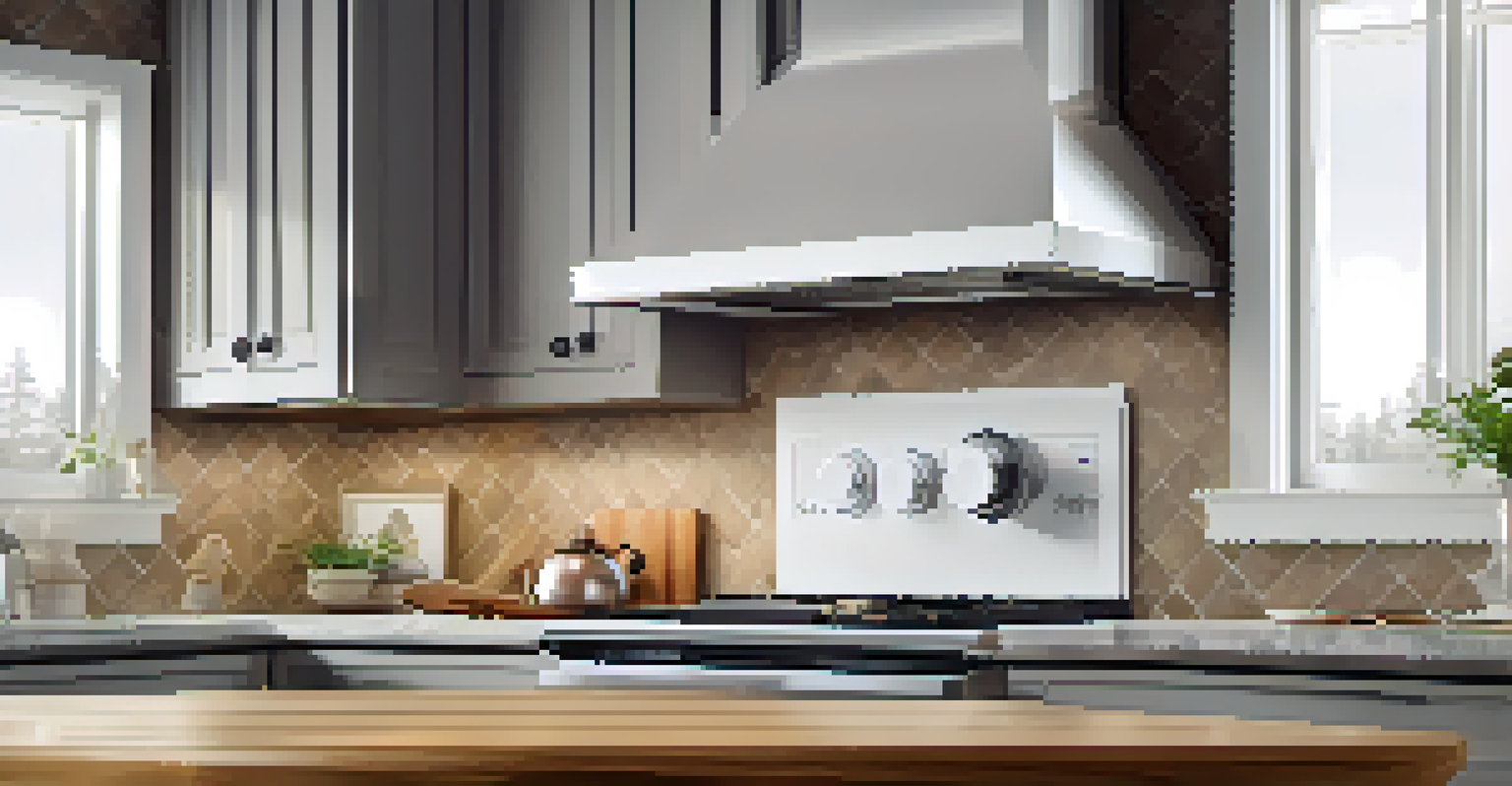The Role of Smart Home Technology in Disaster Preparedness

Understanding Smart Home Technology and Its Benefits
Smart home technology refers to devices and systems that automate tasks and monitor environments through internet connectivity. These tools can range from smart thermostats to advanced security systems. The main benefit is convenience, but they also offer significant advantages in disaster preparedness.
Technology is best when it brings people together.
By integrating smart devices into your home, you can create a connected ecosystem that alerts you to potential dangers. For instance, smart smoke detectors can send notifications directly to your phone, ensuring you're aware of a fire even when you’re not home. This proactive approach to safety can save lives and property.
Moreover, smart home technology can help you manage your energy usage more efficiently. During disasters, conserving energy can be crucial, especially if you need to power essential devices for an extended period. Understanding how these technologies work is the first step in leveraging them for disaster preparedness.
Smart Sensors: Early Warning Systems for Your Home
One of the standout features of smart home technology is the use of sensors that detect environmental changes. These sensors can monitor everything from smoke and carbon monoxide levels to water leaks and temperature fluctuations. Having these devices installed can provide early warnings that are crucial during emergencies.

For example, a smart water leak sensor placed in your basement can alert you to flooding before it becomes a major issue. This not only prevents extensive damage but also gives you time to act and mitigate risks. Similarly, smoke and carbon monoxide detectors can automatically alert emergency services if you're unable to respond.
Smart Tech Enhances Safety
Smart home technology provides proactive safety measures through early warning systems and automated responses during emergencies.
These early warning systems enhance your disaster preparedness plan by ensuring you're always a step ahead. With real-time notifications, you can make informed decisions quickly, which is vital during any crisis.
Smart Home Automation: Enhancing Emergency Responses
Smart home automation allows you to create routines that can be activated during emergencies. For instance, you can set your lights to flash or your doors to unlock automatically when a smoke detector is triggered. This immediate response can facilitate a safer evacuation and guide family members to safety.
The greatest danger in times of turbulence is not the turbulence; it is to act with yesterday's logic.
Additionally, if you have smart thermostats, you can program them to adjust temperatures during extreme weather conditions. This can help maintain a stable environment, ensuring vital systems remain operational, even if the power goes out. Automation thus plays a critical role in both comfort and safety.
By having these automated responses in place, you're not just reacting to emergencies; you're actively minimizing their impact. This proactive approach is a key component of effective disaster preparedness in today’s smart homes.
Remote Monitoring: Keeping an Eye on Your Home Anywhere
One of the greatest advantages of smart home technology is the ability to monitor your home remotely. With the help of security cameras, smart locks, and alarm systems, you can keep tabs on your property no matter where you are. This is especially useful during natural disasters when you may need to evacuate.
Imagine being away from home and receiving an alert about a potential flood. With remote monitoring, you can assess the situation through your smart camera and decide whether you need to return or take other actions. This capability provides peace of mind and allows for timely interventions.
Remote Monitoring Offers Peace of Mind
The ability to monitor your home remotely allows for timely interventions, especially during natural disasters.
In addition, many smart home systems allow you to control your devices remotely. This means you can turn off appliances or adjust settings to prevent further damage, even when you’re miles away. Remote monitoring is a game changer for disaster preparedness.
Integrating Smart Home Tech into Your Emergency Plan
Creating an emergency plan is essential for disaster preparedness, and integrating smart home technology can make it even more effective. Start by identifying which smart devices you have and how they can contribute to safety. For instance, ensure your smoke detectors are interconnected so that if one goes off, all of them do.
Next, consider setting up alerts for different scenarios. Many smart home systems allow you to customize notifications for events like power outages or temperature changes. This way, you can ensure that you and your family are informed and ready to act when necessary.
Finally, regularly review and practice your emergency plan, incorporating your smart devices into drills. Familiarity with your technology will help everyone in the household respond quickly during a crisis, turning your smart home into a powerful ally in disaster preparedness.
The Role of Smart Home Technology in Community Preparedness
While many think of smart home technology as an individual benefit, its role in community preparedness is equally important. When homes are equipped with smart devices, it contributes to the overall safety of neighborhoods. For instance, smart security cameras can help monitor community areas and provide valuable footage in case of emergencies.
Moreover, communities can leverage smart technology for coordinated responses. For example, if several homes experience power outages, smart systems can communicate this data to local authorities, who can then prioritize assistance. This interconnectedness enhances collective disaster response efforts.
Community Resilience Through Tech
Integrating smart home devices not only benefits individual households but also strengthens community preparedness and response efforts.
In essence, smart home technology fosters a sense of community resilience. When individuals are prepared, it leads to stronger, safer neighborhoods, ultimately benefiting everyone during times of crisis.
Challenges and Considerations for Smart Disaster Preparedness
Despite the numerous advantages, there are challenges to consider when integrating smart home technology for disaster preparedness. One major concern is reliance on internet connectivity. In the event of a natural disaster, internet services may be disrupted, potentially leaving you without access to your smart devices.
Another consideration is the initial investment. Smart home technology can be costly, and not everyone may have the budget to implement extensive systems. It’s crucial to prioritize the most beneficial devices that suit your needs and gradually build your smart home ecosystem.

Finally, it's important to maintain and update your devices regularly. Outdated technology may not function as intended during emergencies. By staying informed about your devices and their capabilities, you can maximize their effectiveness in ensuring your safety during disasters.